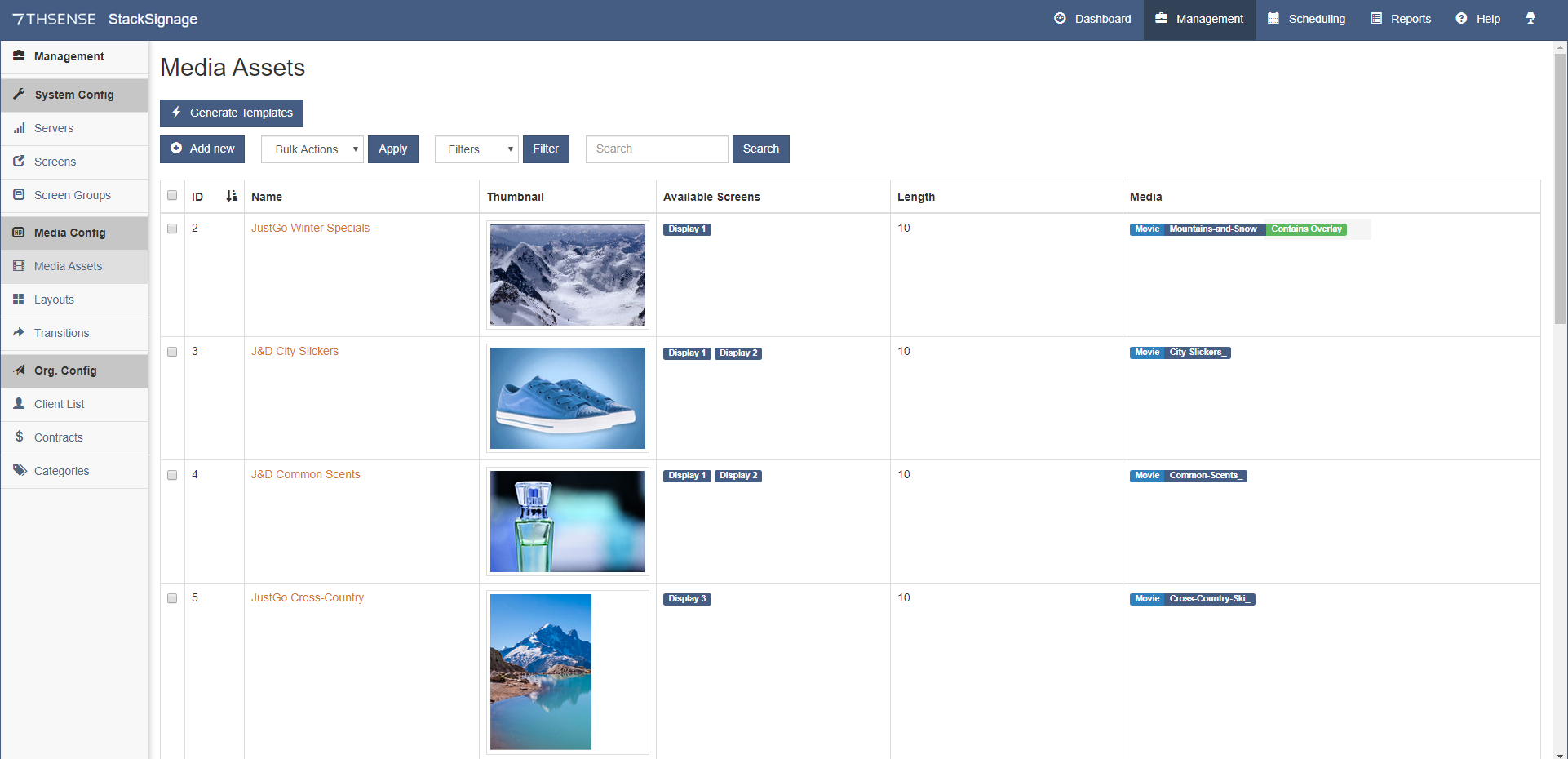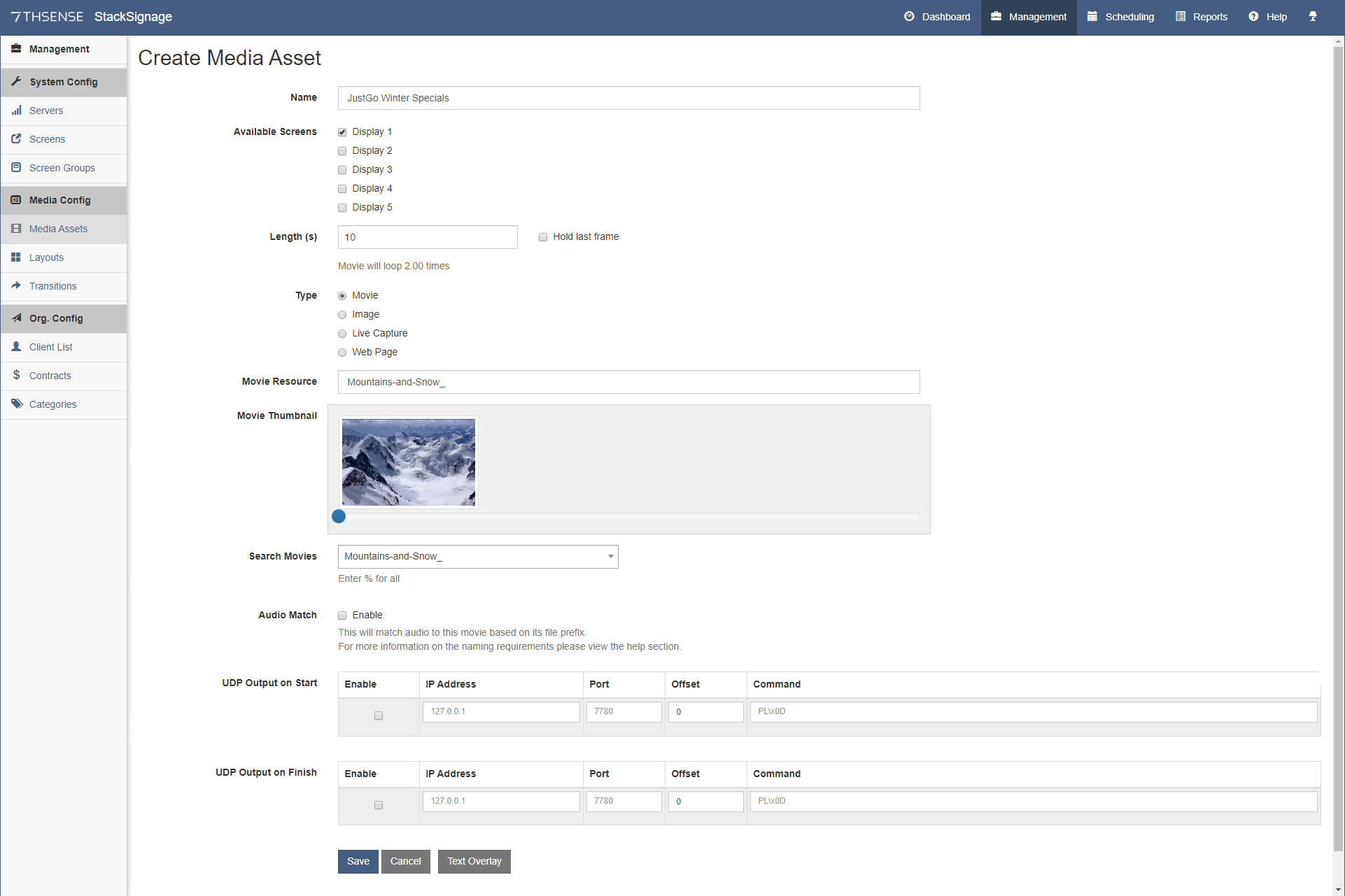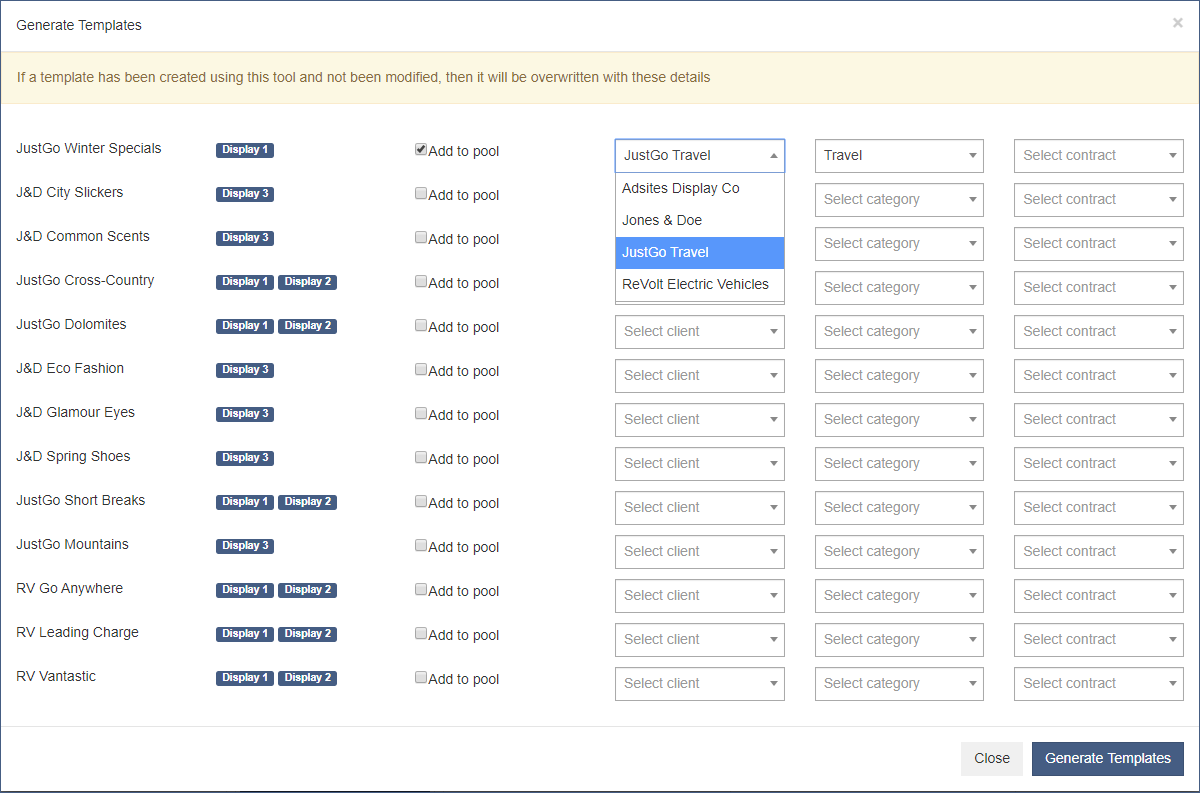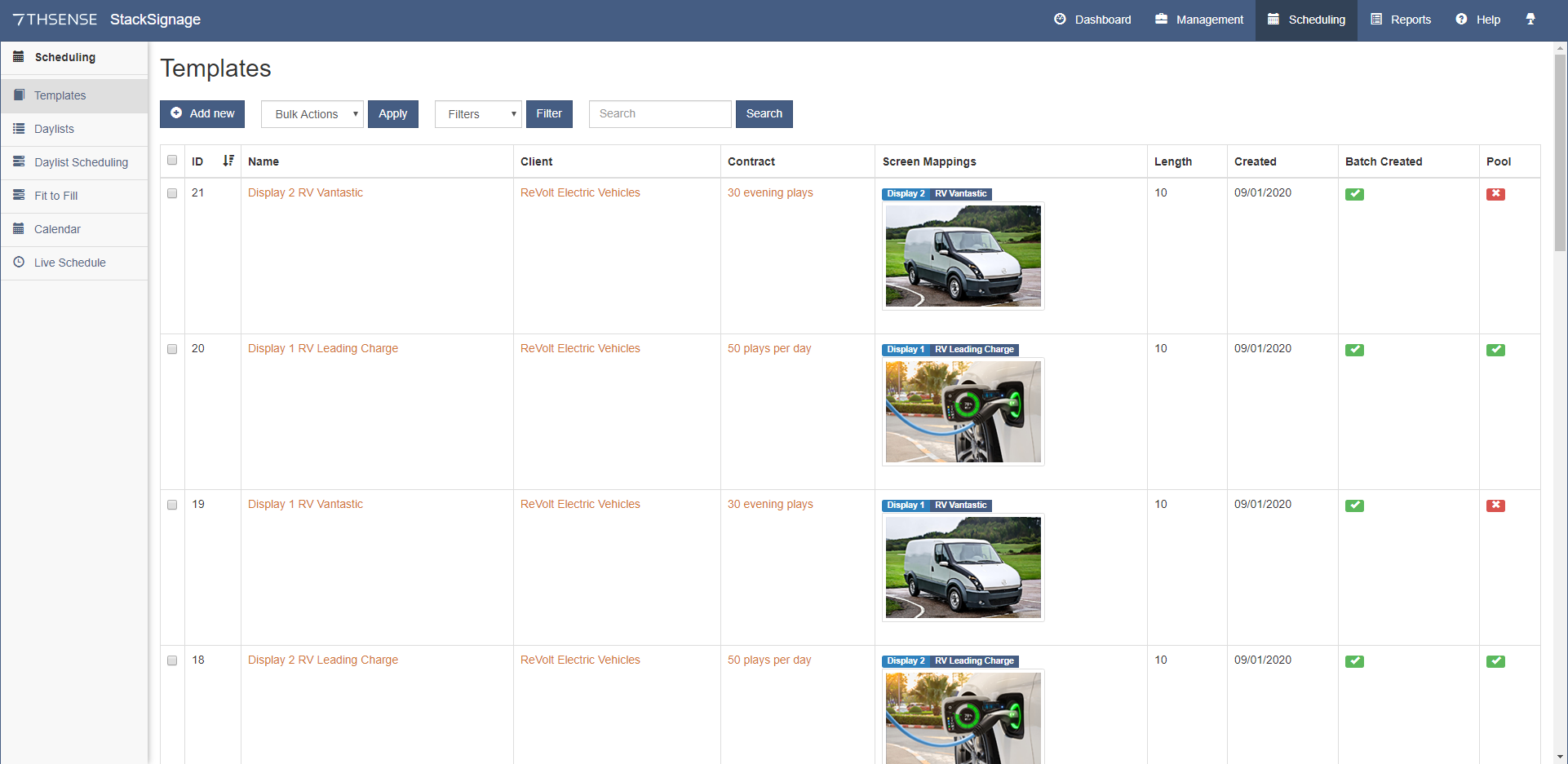A media asset is an instruction to play a stored media resource on a display or displays for a certain time, with an optional start and stop control string.
Media Assets are called by schedule Templates. |
Here, our client JustGo Travel has supplied a 10-second movie with the base filename ‘Mountains-and-Snow_’, which we will show on Display 1.
Name
Type a meaningful name that you will use in scheduling. This might include a company and/or a campaign name. A good resource and Media Asset naming discipline will save a lot of potential confusion later.
Available screens
These are the display areas you have previously set up. If a resource will be played on more than one screen, select all screens to which it will be available.
Length (in seconds)
Whatever the length of the actual media resource, this determines the playing duration of this Media Asset.
Movies will loop back to their start if allocated more time than their length. A movie with slightly more frames than exact seconds (e.g. 958 frames at 30 fps) can only be shown in full seconds duration and in multiples of 5 seconds (in this example, 30 seconds) so would be cut slightly short.
If a movie is slightly fewer frames than exact seconds assigned to it, check ‘Hold last frame’ to play the last frame continuously until the end of the play duration instead of looping.
Other media have no time definition, so play time is defined here. A message may need to be displayed at some times for 5 seconds, and at other times for 10, so two media assets would be created, suitably named.
Information below the length: shows number of loops, truncation or last frame repeats wherever the movie length differs from the assigned length in seconds.
Type
Select the type of media. This also determines the search list contents below.
Movie Resource
You can type the resource filename exactly, here, but it is better populated by selecting from the search box. Note that movie frame sequences end with an underscore character.
Movie Thumbnail
Thumbnails are generated for movies when resources are refreshed. These appear
Search Movies
Start typing the name you know, or type % for the complete list available. This list is an accumulated de-duplicated list of media resources, by media type, drawn from all the resource folders on all Players. All items with the string entered, will be listed.
Note that these are the names of the frame sequences available, not of the folders containing them.
Audio Match
Separate audio files will be detected as matched to a frame-based (e.g. 7TH, STH, or .tga) movie if they share the same filename stem.
UDP Output on Start / UDP Output on Finish
The start and end of a template can be used to send UDP commands to external devices.
Text Overlay
Once created, a media asset can be given a Text Overlay. Note the green tag Contains Overlay in the list shown below, where a text overlay has been added to the top item.
Media Assets List
We have now listed the media that our Clients have supplied, and tied them to which Screens they can be shown on:

We can now use Templates to bring Media Assets, Clients, Categories, Contracts and Screen Layouts together.
Template Wizard

You can create templates for selected assets in this list, with basic details, using the wizard as a batch process.
Select the required assets for which you want to batch create templates (or tick the header check box for all), then click the wizard button.
Assign details for each item from the drop-down lists of Clients, Categories and Contracts you have already created. Check ‘Add to pool’ if you want to be able to use the item in automated scheduling. Any of these can be edited later.
Templates created by batch are shown in the main Scheduling > Templates page where they can be edited with additional details as required. Once re-saved there, re-running the wizard will not overwrite these templates (though they may have the same auto-generated name).
Different Media Lengths and Avoiding Blank Screens
Media Assets are played for Clients, but due to scheduling and availability of each Screen, short gaps could occur between templates on any screen. To avoid this, create minimum-length Templates for each Screen, assigned as Pool Templates for autoscheduling, and available on all Players. These assets may be regular announcements, graphic images or neutral movie scenes where duration does not matter.



